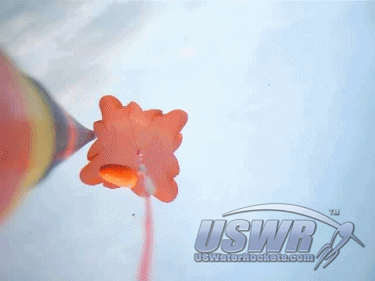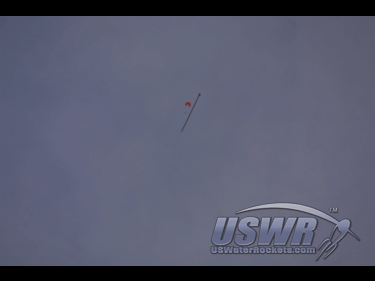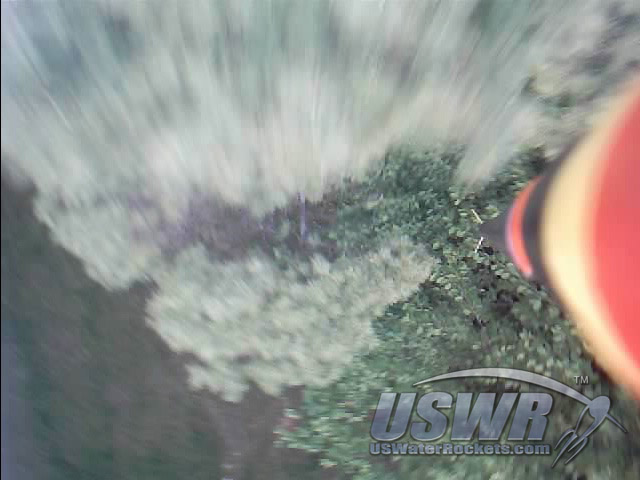U.S. Water Rockets reports another successful day of testing of their rapid deploy parachute system.

The latest round of test flights were intentionally conducted at minimum safe pressure (the lowest pressure the rocket will reliably achieve stable flight) which allowed ground observers to view and photograph the new parachute in action. At a mere 752 feet apogee, the entire deployment process was easily visible with binoculars from the ground, making the performance of the new system easy to evaluate. As a backup, in case the ground observations failed to produce conclusive performance data, U.S. Water Rockets installed an innovative "ChuteCam" system in place of the WRA2 required Apogee camera. The ChuteCam uses a series of prisms to bend light and give the ChuteCam a reverse angle view, perfect for observing the parachute unfurling behind the rocket after deploy.
The flight was conducted in a relatively high wind condition, so the low altitude flight was essential to keep the rocket from descending into the nearby trees. As seen in the video below, the actual flight almost did land in a tree. The landing was an unexpected real world test of the strength of the new parachute material, which proved to be exceptionally resistant to snagging and tearing. This excited the U.S. Water Rockets' Payload Specialist, as he will now be able to delay the deploy for several seconds past apogee without fear of tearing the parachute off. This reportedly allows a safety margin against premature deploys as well as provides a longer period of freefall for the onboard camera to record the images required for the WRA2 record.
The test results taken from the onboard video and ground observations prove conclusively that the new parachute materials deploy approximately 10 times faster than polyethylene plastic film and 6 times faster than vinyl. Since this material is as strong as vinyl and much lighter, it will now be applied to future record flights of X-10.
Flight Video:











